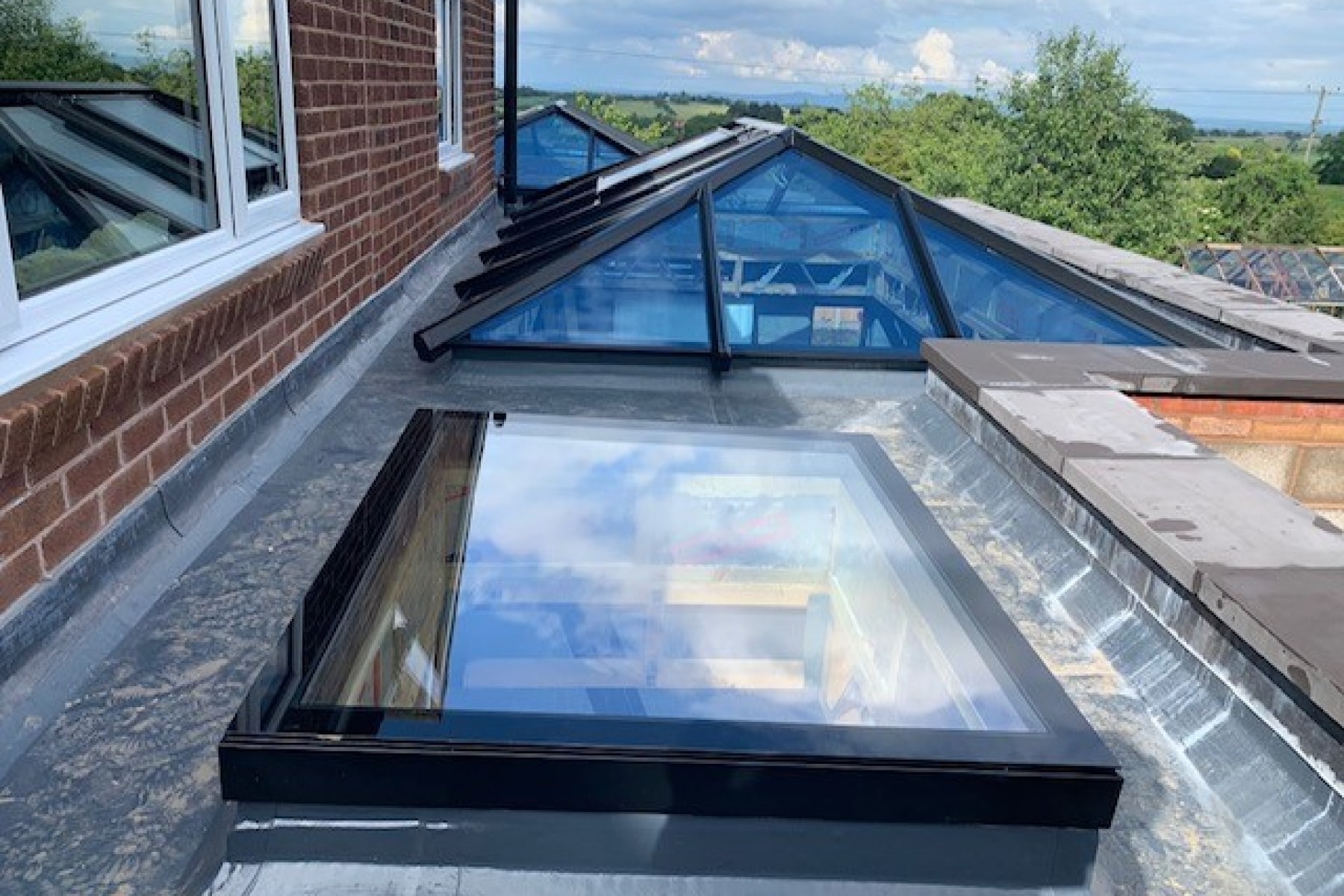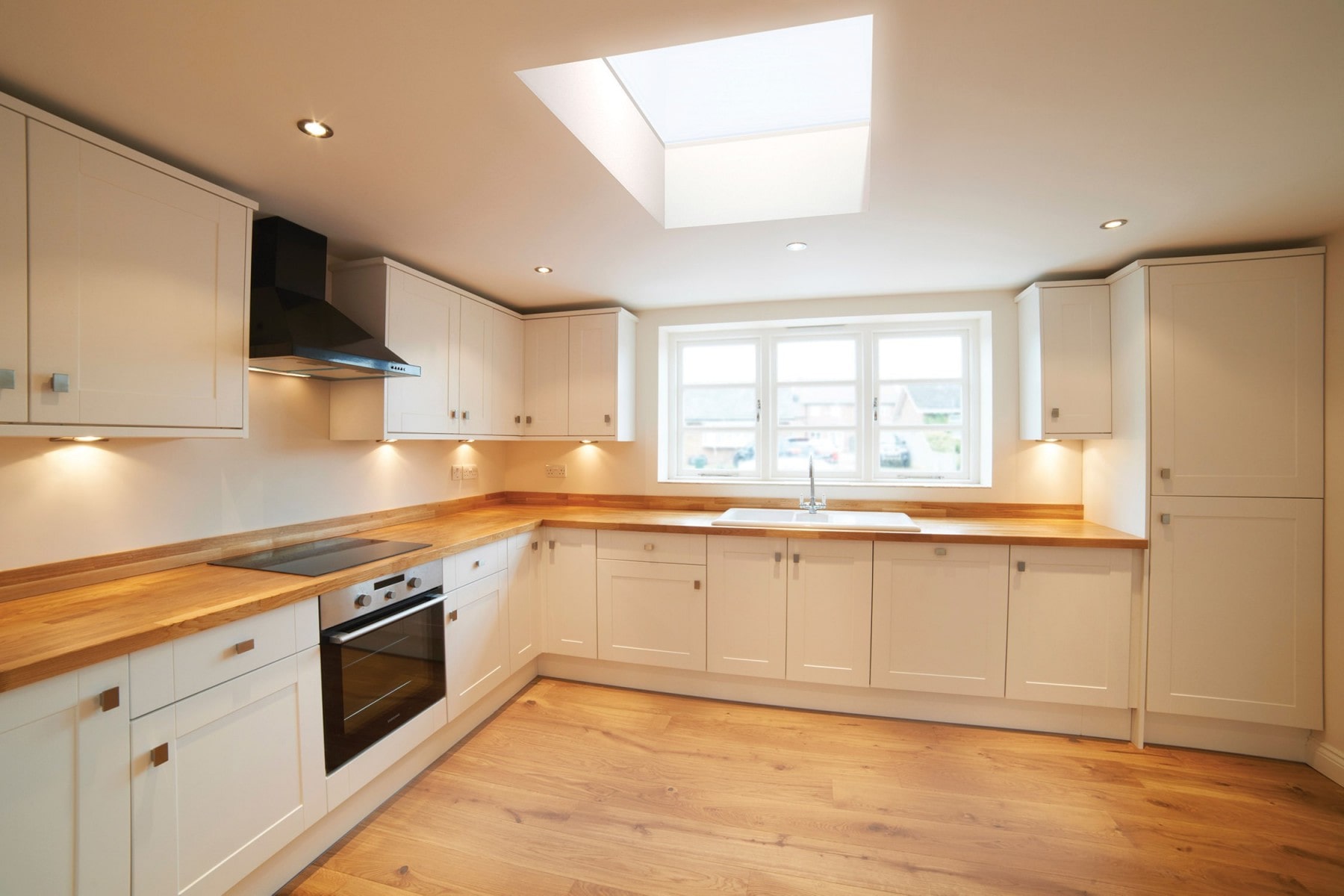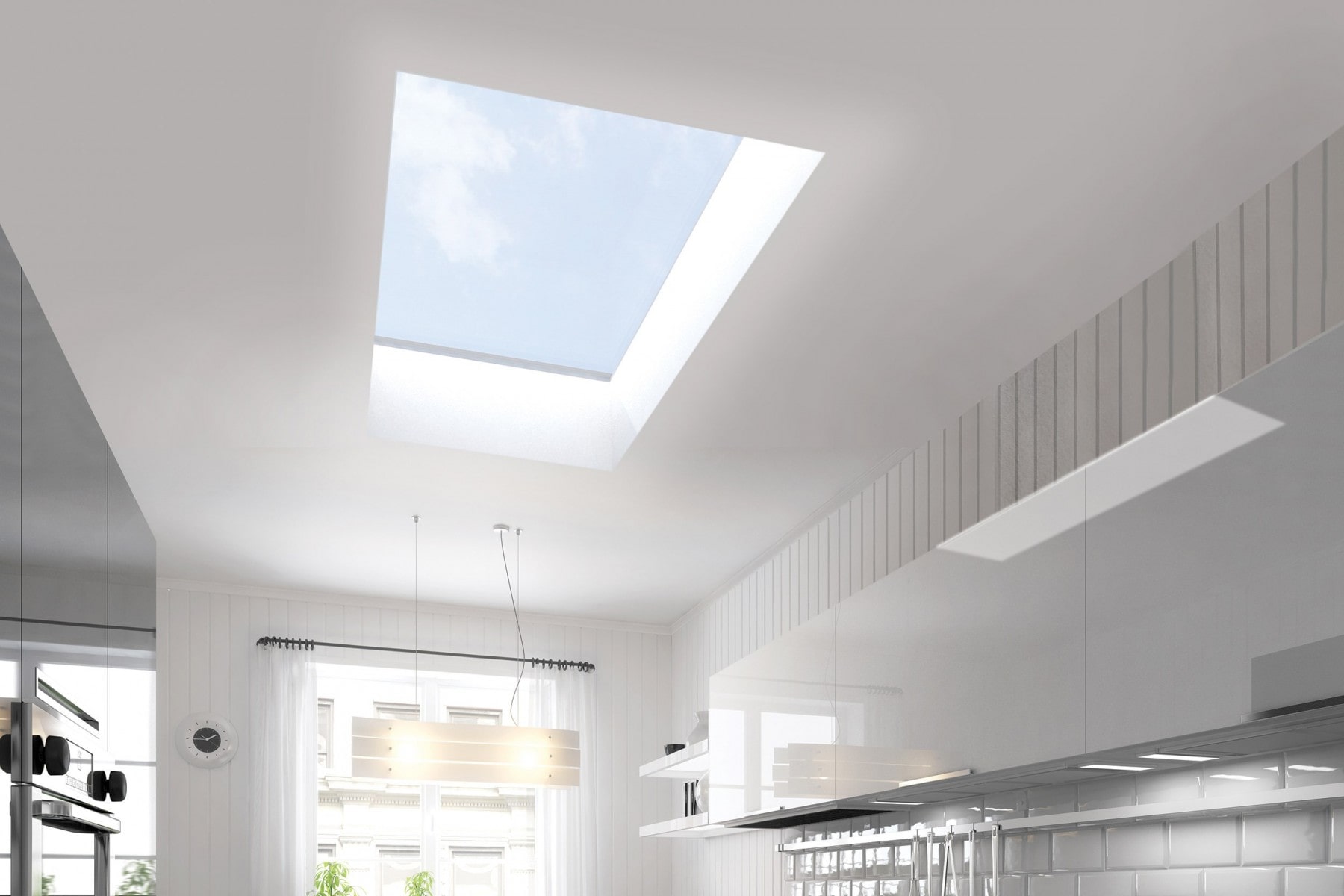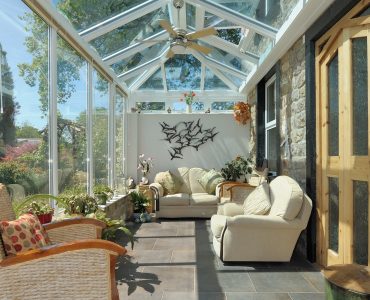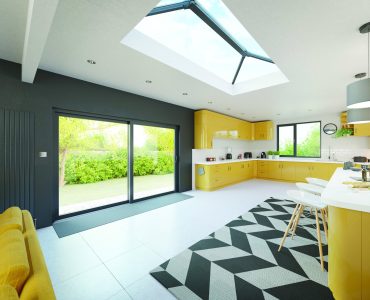Flat sky lights
Flat skylights are modern architectural elements installed on flat roofs to introduce natural light into interior spaces. Comprising a frame and a glazed surface, typically made of glass, they offer a minimalist design that seamlessly integrates with contemporary buildings. Flat skylights not only illuminate rooms with sunlight but also add an elegant touch to the overall aesthetic, enhancing the sense of space and openness within a structure.
| Key Points | 1. 𝗙𝘂𝗻𝗰𝘁𝗶𝗼𝗻: Flat skylights are installed on flat roofs to allow natural light to enter interior spaces, reducing the reliance on artificial lighting during the day. 2. 𝗗𝗲𝘀𝗶𝗴𝗻: They feature a sleek and minimalist design, with a frame and glazed surface that sits flush with the roof, creating a seamless integration with the building's architecture. 3. 𝗠𝗮𝘁𝗲𝗿𝗶𝗮𝗹𝘀: Flat skylights are typically constructed with materials such as aluminum, steel, or uPVC for the frame, and glass or polycarbonate for the glazed surface. 4. 𝗜𝗻𝘀𝘁𝗮𝗹𝗹𝗮𝘁𝗶𝗼𝗻: Proper installation is crucial to ensure structural integrity, weatherproofing, and compliance with building regulations. This includes accurate positioning, secure fixing, and sealing of joints. 5. 𝗘𝗻𝗲𝗿𝗴𝘆 𝗘𝗳𝗳𝗶𝗰𝗶𝗲𝗻𝗰𝘆: Flat skylights can contribute to energy efficiency by reducing the need for artificial lighting during the day, thereby lowering electricity consumption. 6. 𝗩𝗲𝗻𝘁𝗶𝗹𝗮𝘁𝗶𝗼𝗻: Some flat skylights are designed to be operable, allowing for ventilation and airflow regulation within the interior space. 7. 𝗦𝗮𝗳𝗲𝘁𝘆 𝗙𝗲𝗮𝘁𝘂𝗿𝗲𝘀: Safety considerations, such as the use of tempered or laminated glass to reduce the risk of breakage and injury, should be integrated into the design of flat skylights. 8. 𝗠𝗮𝗶𝗻𝘁𝗲𝗻𝗮𝗻𝗰𝗲: Regular cleaning and maintenance are necessary to preserve the appearance and functionality of flat skylights, including clearing debris from the surface and inspecting seals and flashing details. |
|---|---|
| Technical Specification | 1. 𝗦𝘁𝗿𝘂𝗰𝘁𝘂𝗿𝗮𝗹 𝗖𝗼𝗻𝘀𝗶𝗱𝗲𝗿𝗮𝘁𝗶𝗼𝗻𝘀: Flat skylights must be designed to withstand loads such as wind, snow, and potential foot traffic, requiring a robust frame and appropriate support structure. 2. 𝗠𝗮𝘁𝗲𝗿𝗶𝗮𝗹𝘀 𝗦𝗲𝗹𝗲𝗰𝘁𝗶𝗼𝗻: The choice of materials for the frame and glazing is critical for durability, weather resistance, and thermal performance. High-quality materials such as aluminium, steel, and tempered glass are commonly used. 3. 𝗚𝗹𝗮𝘇𝗶𝗻𝗴 𝗢𝗽𝘁𝗶𝗼𝗻𝘀: Different types of glazing can be utilized, including single or double-pane glass, low-e coatings, and tinted or laminated glass, to optimize energy efficiency, UV protection, and acoustic insulation. 4. 𝗜𝗻𝘀𝘂𝗹𝗮𝘁𝗶𝗼𝗻: Proper insulation is essential to prevent heat loss in winter and minimize heat gain in summer, ensuring thermal comfort within the space. This may involve using insulated glazing units and thermal breaks in the frame. 5. 𝗪𝗮𝘁𝗲𝗿𝗽𝗿𝗼𝗼𝗳𝗶𝗻𝗴: Effective waterproofing measures are necessary to prevent leaks and water ingress, particularly in areas prone to heavy rainfall or snowfall. This includes proper sealing of joints and flashing details. 6. 𝗩𝗲𝗻𝘁𝗶𝗹𝗮𝘁𝗶𝗼𝗻: Flat skylights may incorporate ventilation options such as roof vents or operable windows to facilitate airflow and regulate temperature and humidity levels within the enclosed space. 7. 𝗦𝗮𝗳𝗲𝘁𝘆 𝗙𝗲𝗮𝘁𝘂𝗿𝗲𝘀: Safety considerations, such as the use of tempered or laminated glass to reduce the risk of breakage and injury, should be integrated into the design of flat skylights. 8. 𝗕𝘂𝗶𝗹𝗱𝗶𝗻𝗴 𝗥𝗲𝗴𝘂𝗹𝗮𝘁𝗶𝗼𝗻𝘀: Compliance with local building codes and regulations is necessary for the design and installation of flat skylights, ensuring structural integrity, safety, and energy efficiency. 9. 𝗜𝗻𝘀𝘁𝗮𝗹𝗹𝗮𝘁𝗶𝗼𝗻: Proper installation by trained professionals is essential to ensure the structural stability and weatherproofing of flat skylights. This includes accurate positioning, secure fixing, and sealing of joints to prevent leaks and water ingress. |


